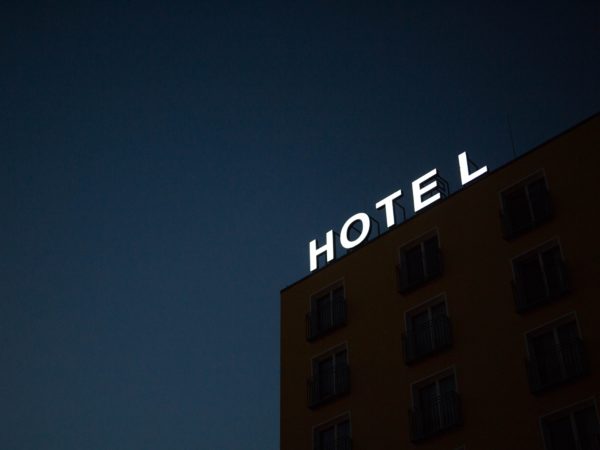
Trevor Stuart-Hill, ISHC
President, Revenue Matters
July 31, 2018
I have often been frustrated seeing parity notices coming in from OTA’s and other online distributors. In our practice, we support all sorts of properties and I began to notice a common theme; it is the independent properties that seem to be struggling to achieve and maintain rate parity across all channels. There had to be some good reasons for this so I wanted to get to the bottom of the issue once and for all. What I discovered was eye-opening.
Keep in mind that it was the hotel brands themselves (not the OTA’s) that insisted on having rate parity clauses within their distribution agreements beginning in the late 1990’s – and for good reason. Nevertheless, they are now in place and it is incumbent on hotels to comply with those provisions since hotels are the ones who are determining price and inventory availability – right? … Not so fast!
So, why is it so hard to maintain rate parity? My immediate thought was that it had to be technology related. After all, brands seemingly have their act together on the technology front in terms of integration. And, they have people (lots of people) to handle things. Independents are left to their own devices to “patch” together disparate technologies (PMS, RMS, CRS, CRM, POS etc.) in order to operate. In reality, brands face the same technological challenges and do exactly the same thing as independents, but they “package” it to make it appear seamless – so that wasn’t the issue. There seemed to be something else at work; something more sinister.
Dirty Little Secret #1: Fixed-rate Wholesale Agreements. Some traditional wholesalers are unable or unwilling to accept dynamic pricing messages and instead rely on properties to provide seasonal rates that are fixed. The intent of these agreements is to enable wholesalers to mark up these net rates and efficiently distribute them to their regional network of brick-and-mortar travel agencies (thereby enabling hotels to connect with agents in far corners of the world in their native languages). Parity issues arise when marked-up wholesale rates are lower than published rates and are then distributed globally through publically viewable electronic channels.
The solution – well, the long-term solution is to update your wholesale contracts to prevent this type of behavior. In the meantime, you can always book the rate you see online yourself and watch for the reservation to come through under a particular wholesaler’s rate code. If you ask the wholesaler nicely to stop this, they will likely comply – at least for a while.
Dirty Little Secret #2: OTA Margin Plays. You would think that rate parity clauses in OTA agreements would provide a level playing field in terms of pricing for both the hotel and the OTA. Unfortunately this doesn’t appear to be the case at all.
One particular OTA uses the technique of lowering mark-ups on meta-search sites such as TripAdvisor so as to appear to offer the lowest price. The internal name they use for this is SHPM (small hotel pricing model). Hmmm.
Meanwhile another OTA automatically uses a technique they call “defensive pricing” whereby if a lower rate is found on another site, they will automatically apply a 5% – 7% discount off their published rate to remain competitive. Unfortunately, they often “forget” to remove this behind-the-scenes pricing rule that will automatically trigger parity issues with other OTA’s over dates where, technically, the hotel is fully compliant from their side.
The solution – have a conversation with your local OTA market manager. These practices are likely beyond their direct control, but they can send a message up the chain of command. Based on our experience, you should likely expect these practices to resurface every 6-8 weeks or so.
Dirty Little Secret #3: Rate Mixing. Not all OTA’s, or hotels themselves for that matter, have the capability of stringing different rate plans together in order to fulfill a reservation request, but one particular OTA does. You see, parity issues are not only caused by pricing, but also from availability (both rate and inventory). During shoulder nights around promotional periods, advance purchase deadlines and black-out dates, rate mixing will trigger parity issues. In some cases, it also causes operational concerns and guest satisfaction issues. For example, one of our clients offers both a meal plan (MAP) and room-only rate (EP). Due to the practice of rate mixing, a guest recently arrived where part of their stay was under the MAP program and the other was EP. Try explaining that one to a guest.
To make matters worse, the “dirty little secrets” mentioned above don’t happen in isolation or even in sequence. They happen simultaneously… causing a vicious cycle that makes it almost impossible to recover from.
Bottom line, eliminating rate parity clauses would be disastrous for hoteliers so those brands that negotiated for this in the late 90’s did the right thing.
The way forward… Get to know your OTA market managers and have regular contact with them. They have a wealth of knowledge about your area will become an advocate for you and your business. They also need to understand what your boundaries are. Here is an example of a response we recently received from one such market manager when expressing concern over their predatory pricing practices (Note: some specifics have been redacted, but you get the idea):
“Name of competing OTA” quite often runs these campaigns as well (in “name of city” almost every week after hours) – unfortunately, the industry is crazy competitive right now and everyone is trying to gain the customer. Some hotels actually don’t mind the marketing push, as long as their net rate is not lowered. I’ve let our team know “Name of Hotel” does not wish to participate – it should be down in 24 hours.



